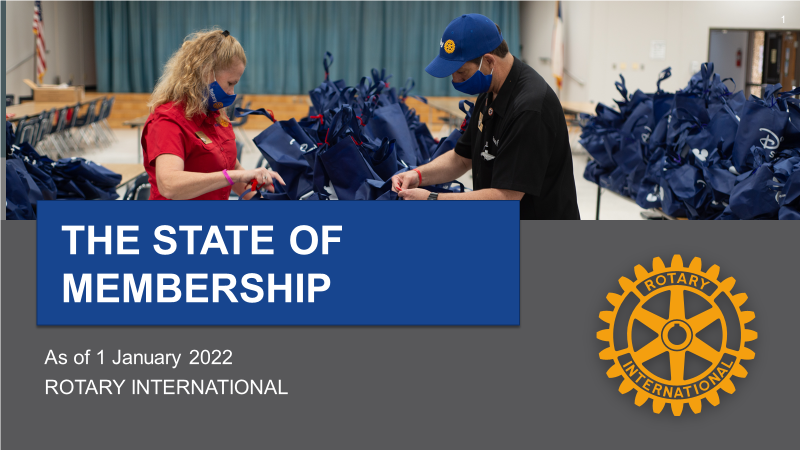
When Rotary’s membership is strong, our clubs are more vibrant, Rotary is more visible, and our members have more resources to help communities flourish. To accomplish everything we want to do, we need our club, district, and zone leaders to commit to growing Rotary and Rotaract. That’s why growing our membership is our top internal organizational priority.
This presentation will provide you with an overview of the current state of Rotary membership as of January 2022; and, it will provide ideas for reaching the goals of the RI and MSRE Membership Action Plan (under development), which will include: increasing our impact; expanding our reach; enhancing participant engagement; and, increasing our ability to adapt.
E-CLUB PROGRAM
PRESIDING TODAY IS: Richard Phalunas, MSRE Membership Chair
Ding! We’re now in session.
Welcome, all – visitors, fellow Rotarians, and guests alike to this E-Club program!
Remember the Four-Way Test!
At the beginning of each meeting, we remind ourselves of The Four-Way Test. Therefore, please remember to ask yourself always ...
Of the things we think, say, or do:
- Is it the TRUTH?
- Is it FAIR to all concerned?
- Will it build GOODWILL and BETTER FRIENDSHIPS?
- Will it be BENEFICIAL to all concerned?
Reflective Moment
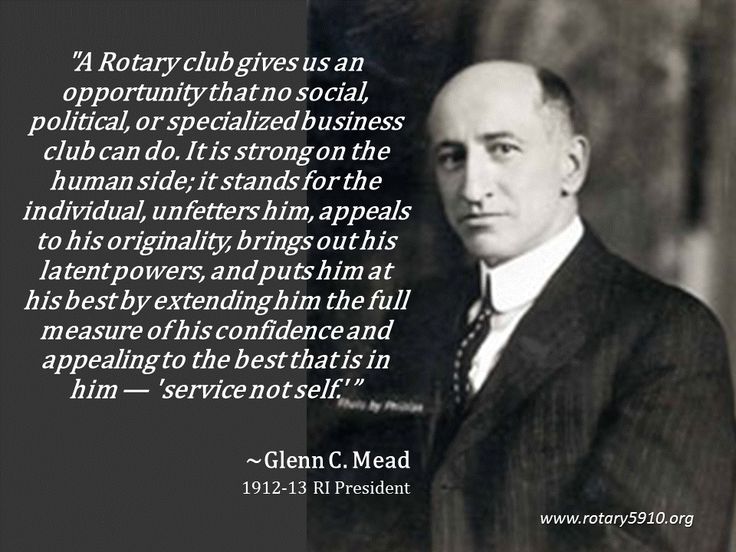
Leadership Quote
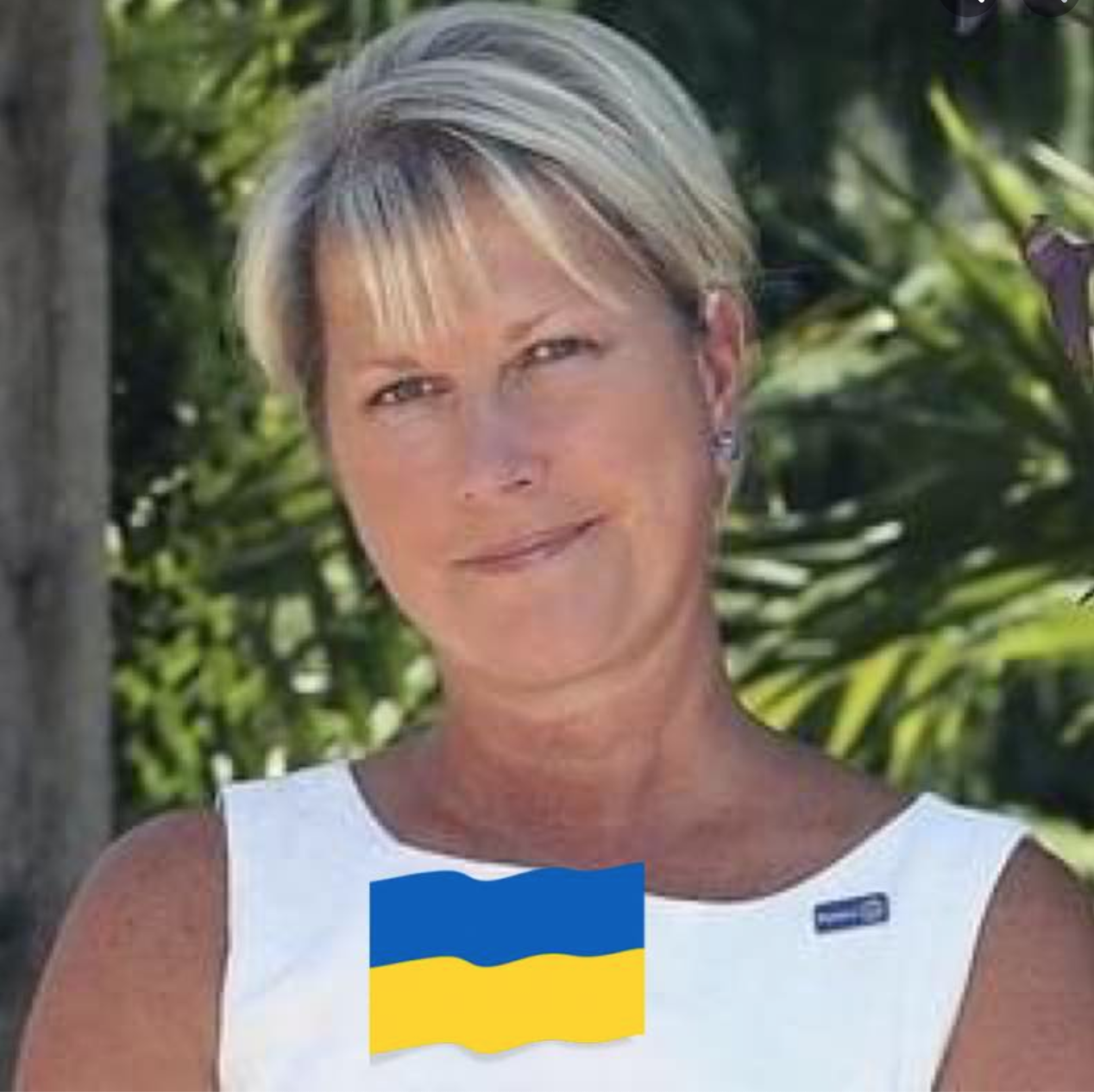
– Jennifer Jones, Rotary International President-Elect, Rotary Club of Windsor – Roseland, Ontario, Canada (First woman president since Rotary's founding 117 years ago!)
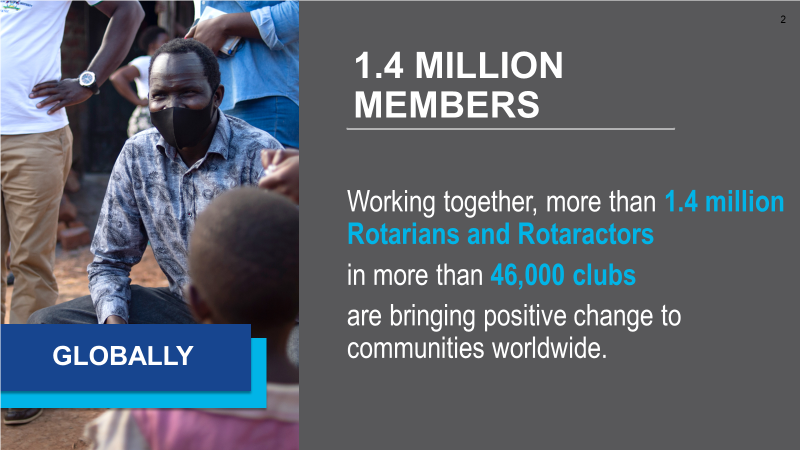
Rotary’s global membership is 1.4 million people of action. Working together, 1.2 million Rotarians and 200,000 Rotaractors in more than 46,000 clubs are making positive change worldwide. The 2019 Council on Legislation gave Rotaract clubs a unique type of membership in Rotary International. This decision elevated Rotaract and positioned Rotary for a future that is innovative and inclusive and can adapt to changing times.
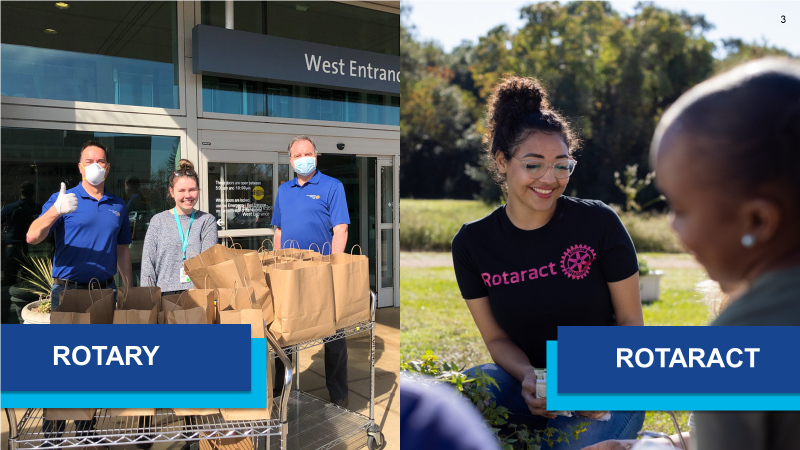
So what’s the difference between these two, distinct membership types? Rotary provides an experience that seeks to engage multiple generations who share the ideals of service, leadership, diversity, integrity and friendship, and wish to have fun while creating lasting change in the world, in their communities, and in themselves. While Rotaract appeals to young adults who prefer to grow their service, professional and leadership skills through a fun and inclusive near-peer network of like-minded people of action.
We know that whether they’re studying at a university or starting a career, Rotaractors add so much to our membership and are Rotarians’ equal and valued partners in service. They can be appointed to district positions and be nominated for awards to recognize their efforts. Let’s continue to look for ways to engage Rotaractors in everything we do.
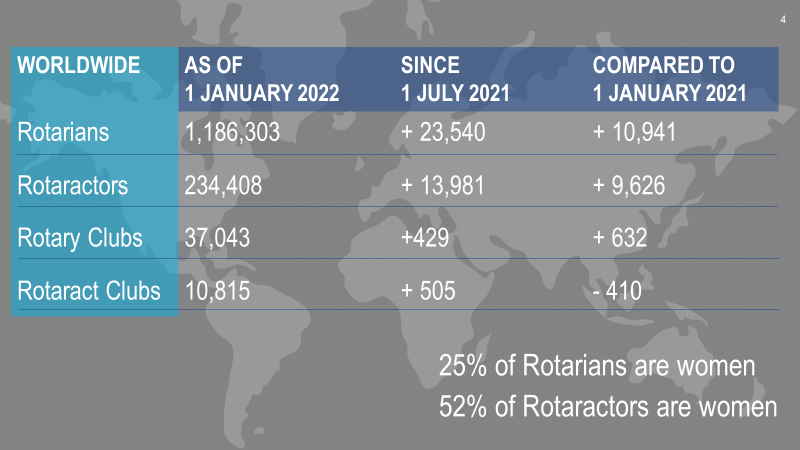
We have seen some encouraging growth since 1 July 2021, including:
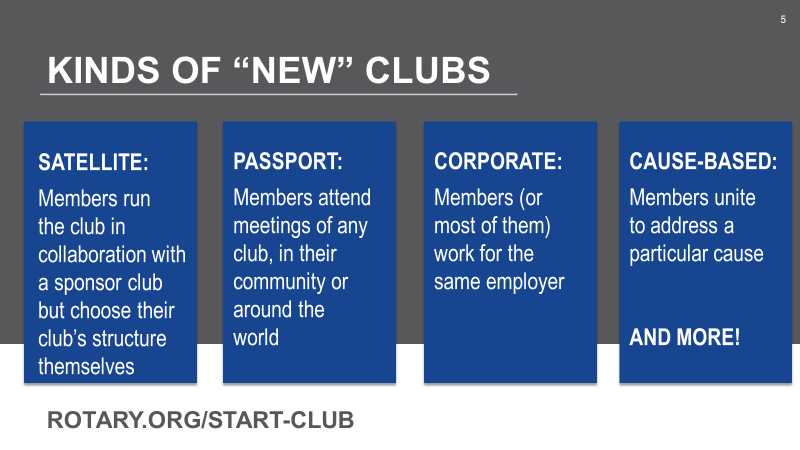
Consider viewing the two-minute “Rotary Anytown” video (https://www.youtube.com/watch?v=e-55H9nVdss) after viewing this slide.
What we know from tracking data year over year, is that new clubs have traditionally driven our growth. As many as 88% of charter members of new clubs are first-time Rotarians.
As you can see from some of the models listed here, new clubs can accommodate different demographic groups and offer more meeting times and formats. The regions that started the most clubs over the last five years also have the strongest membership growth. Conversely, the regions with the greatest net loss in clubs also lost the most members.
But membership growth is only one of the benefits of starting new clubs. When we asked new club development advocates, they said that starting new clubs also engages existing members, increases diversity overall, makes Rotary more visible in communities, and increases the opportunity to partner with other community organizations.

Consider viewing the two-minute “Rotary Anytown” video (https://www.youtube.com/watch?v=e-55H9nVdss) after viewing this slide.
What we know from tracking data year over year, is that new clubs have traditionally driven our growth. As many as 88% of charter members of new clubs are first-time Rotarians.
As you can see from some of the models listed here, new clubs can accommodate different demographic groups and offer more meeting times and formats. The regions that started the most clubs over the last five years also have the strongest membership growth. Conversely, the regions with the greatest net loss in clubs also lost the most members.
But membership growth is only one of the benefits of starting new clubs. When we asked new club development advocates, they said that starting new clubs also engages existing members, increases diversity overall, makes Rotary more visible in communities, and increases the opportunity to partner with other community organizations.
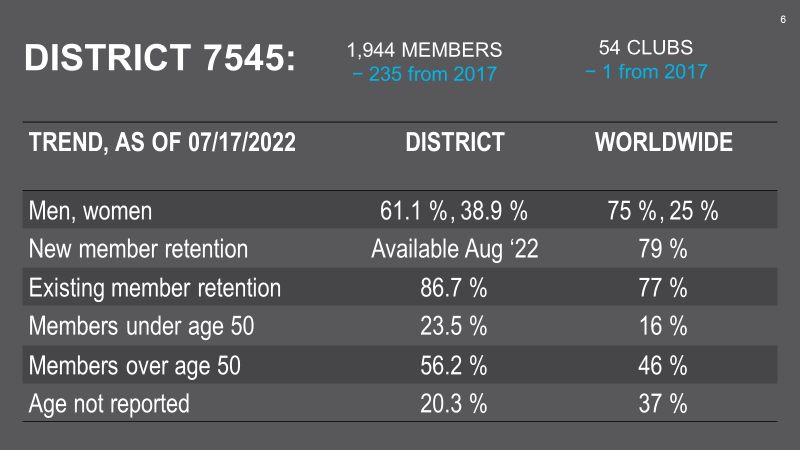
Here’s the profile for District 7545, as of 17 July 2022.
We have 54 clubs and 1944 members. As for retention:
Age and gender: Our district’s members are 61.1% men and 38.9% women, showing a somewhat different mix versus RI worldwide! And, also somewhat different that Rotary globally, 23.5% of Rotarians in District 7545 are under the age of 50 years (although 20.3% have not reported their age to Rotary).
Comparing these RI and District membership numbers to those of the MSRE . . . we counter the trends, with a majority of our members (58%) reporting as female, leaving 42% male. And, as many as 50% of MSRE members could be under the age of 50 years!

Another way we can grow Rotary is by embracing the call to action “Each One, Bring One.” Inspired by all the good he has been able to do through Rotary, RI President Shekhar Mehta is asking every Rotarian and Rotaractor to sponsor just one new member this Rotary year. Research shows that 87% of Rotarians and 41% of Rotaractors were introduced to their clubs through invitations from current members. This makes sense because we’re the undisputed pioneers of service leadership grounded in personal connections. So let’s look for every opportunity to connect with people who share our values and want to make a difference.
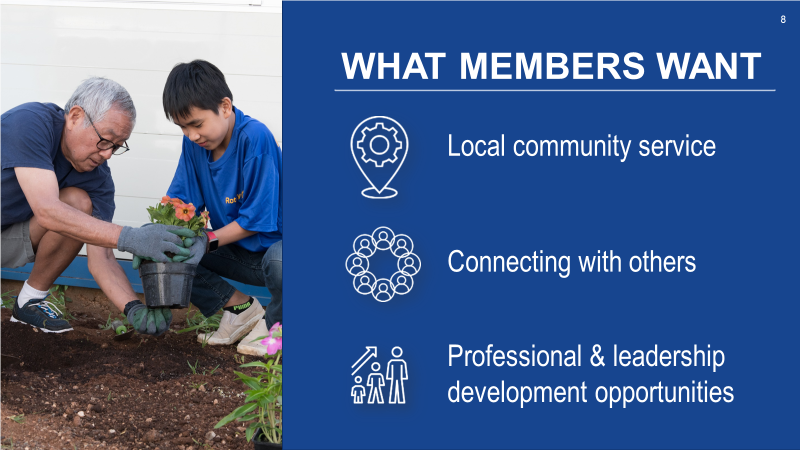
We also know that continuing to meet our members’ expectations is both a challenge and an opportunity. We can’t add members to clubs while overlooking the importance of offering everyone an engaging experience.
Rotarians and Rotaractors have slightly different priorities in their reasons for joining and staying, but generally, they are looking for three things: Local service, connecting with others, and professional and leadership development opportunities.
And while these trends are important, we cannot assume they apply to everyone who becomes a member. We need to take the time to understand the unique reasons our members chose us over other service organizations – and we need to know what they expect from us. What do they want out of their Rotary involvement? And how do they aspire to change and influence our communities and our world, through their membership?
When we start by asking what a member wants, and then try to meet their expectations, we show them that we care. That their unique skills matter to us. This is so important because we now know there is a compelling connection between member satisfaction and member retention.
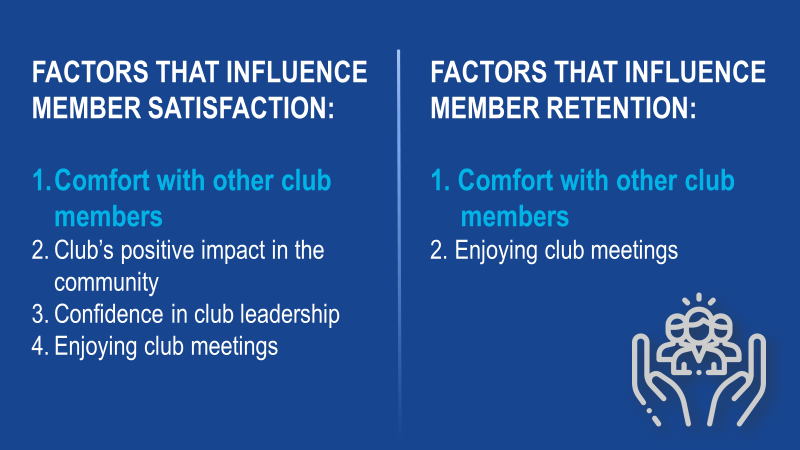
Over and over our surveys find that the comfort and care of our members, is the single greatest driver of member satisfaction and our most powerful tool to keeping our members engaged in our clubs. As comfort increased, the probability of having a higher satisfaction with membership increased as well.
In fact, a member who is not at all comfortable with other members is two to four times more likely to terminate their membership than a member who is extremely comfortable.
This applies not just to current club members, but to anyone and everyone who engages with Rotary. No matter who they are, where they are in the world, or how long they have been connected with us — all members, prospective members, and other participants, deserve and expect to feel valued, respected, and welcomed.
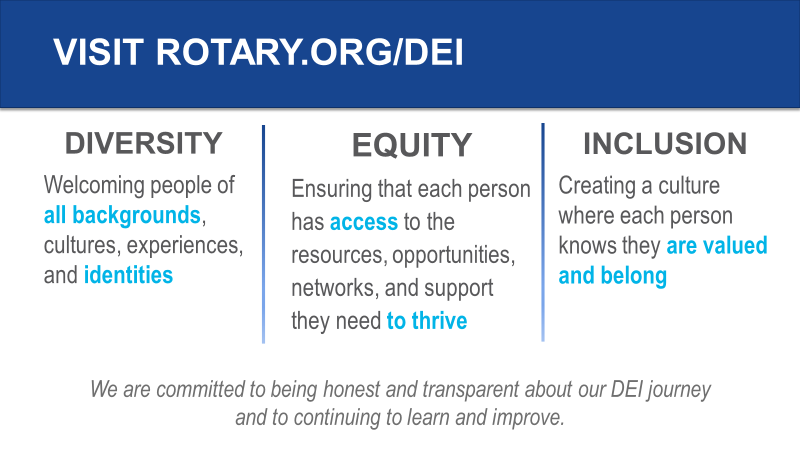
Diversity has long been one of Rotary’s core values, and it guides our interactions with one another and our communities. But we know we need to learn more and do more to make sure that our organizational culture exemplifies diversity, equity, and inclusion. That’s why we recently strengthened our commitment to DEI and created a DEI Code of Conduct.
We expect Rotarians and Rotaractors to exemplify this code of conduct as they interact with one another, Rotary program participants, Alumni, project partners, and members of the community. This code of conduct is one of many tools we have that will contribute to a collaborative, positive, and healthy club environment.
As we continue to focus on this work, let’s make sure we understand and are using the words the same way:
As Rotary International President-elect Jennifer Jones reminds us, “As we strive to weave diversity, equity, and inclusion into Rotary, removing the barriers is the key to inclusion. And inclusion is the key to membership.”
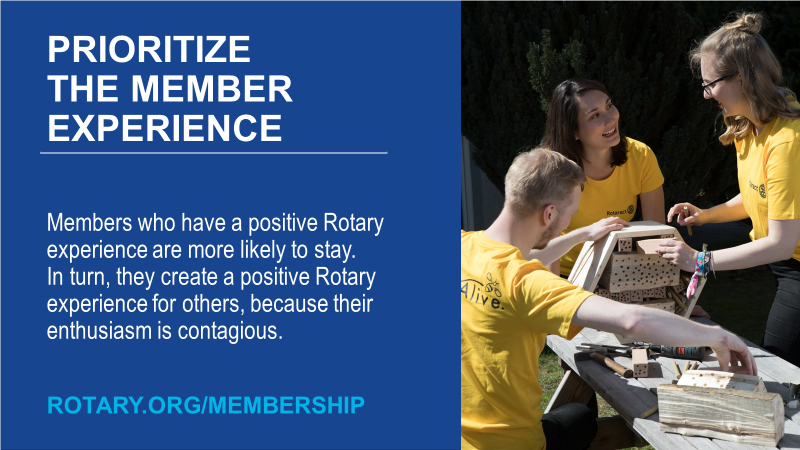
Everyone in Rotary should have opportunities to express what they want from their membership, and that starts by examining inclusion in our own clubs. Remember that what someone joins for may not be what they need years later.
At rotary.org/membership, we have plenty of resources that can help you meet members’ needs.
Here are a few examples:
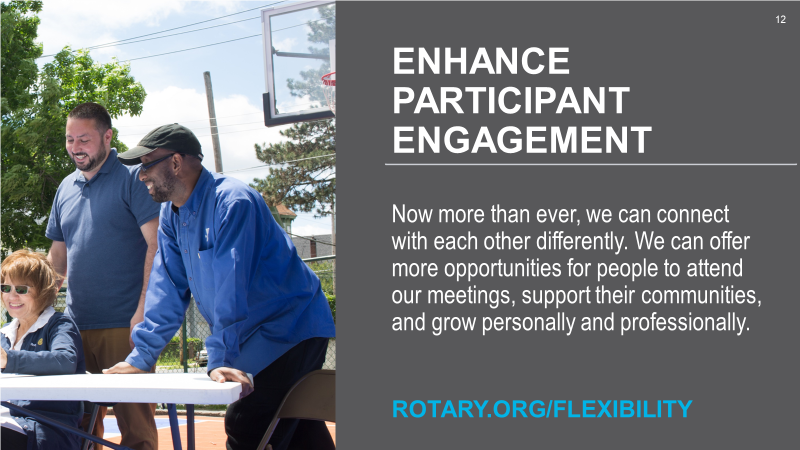
Now more than ever, we have the chance to connect with each other differently — to offer more ways for people to attend our meetings, support their communities, and grow personally and professionally.
Our clubs are making exciting changes to adapt to the diverse needs of their members and communities. They’re:
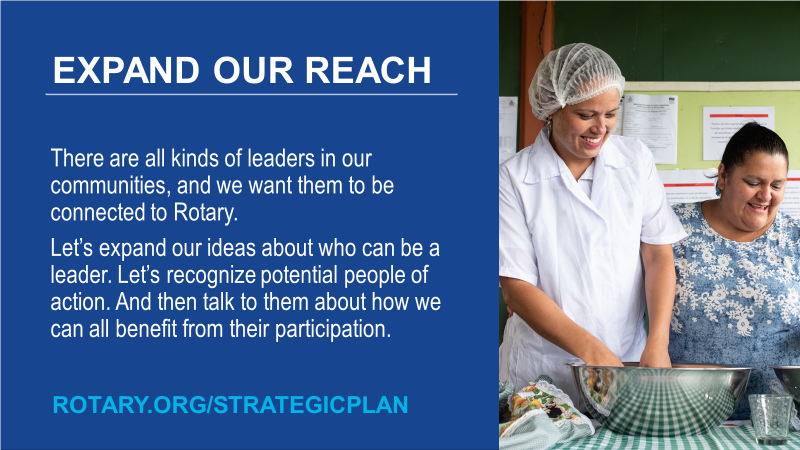
And inclusion extends to how we work with communities. Let’s look around our communities and see how people are connecting through shared cultures or interests. Let’s expand our understanding of who can be a leader. Let’s see people’s potential for action. And then help them use it.
This could mean:
We all want a stronger, more effective Rotary. A Rotary that’s more adept at using partnerships, digital tools, and new ideas to bring people together. More diverse voices in our clubs and in our leadership will help Rotary stay relevant in a changing world.

Increasing membership while also continuing to eradicate polio, fight COVID-19, and serve our communities is an ambitious goal. But our members can meet the challenge.
What can you do? Here are four things:
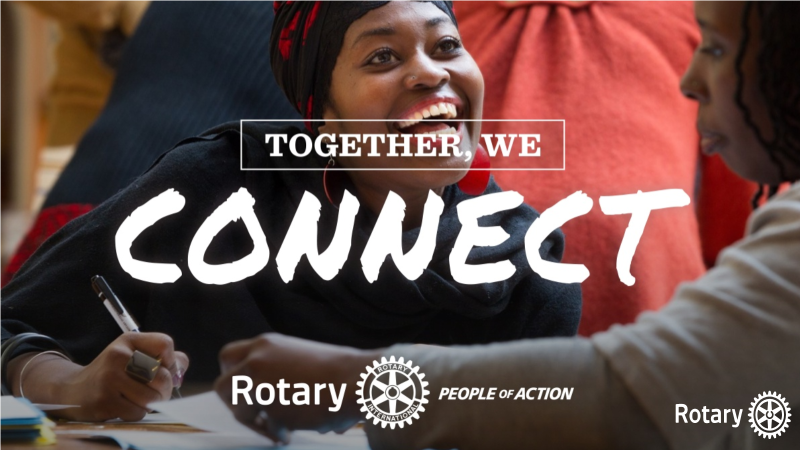
When people connect with Rotary, their potential to make a difference grows exponentially. That’s because they’re connecting to a diverse network of more than 1.4 million people of action — from all over the world — who share a goal of improving people’s lives.
Again, to quote Jennifer Jones, “Imagine a world that deserves our best, where we get up each day knowing that we can make a difference. You don’t imagine yesterday. You imagine tomorrow.”
Together, we see a world where people unite and take action to create lasting change — across the globe, in our communities, and in ourselves.
++++++++++++++++++++++++++++++++++++++++++++++++++++++++++++++++++++++++++++++++++++++++++++++++++++++
Thank you for attending this MSRE program about Rotary Membership. We hope you have enjoyed learning more (in this passive fashion) about Rotary Membership. If anyone is interested in a (ready to use) copy of the PowerPoint presentation from which this program was derived, please send an email request to: Richard Phalunas <rphalunas@gmail.com> or to PDG Sean Sawyer <sawyer.higinbotham@gmail.com>.
Please leave a message below in the comments section of the MSRE meeting.
